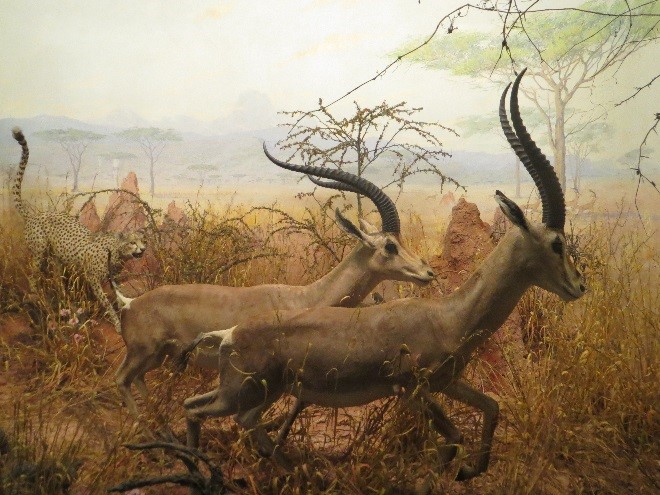
by Patrick McShea
An argument can be made that one of the more interesting features within this diorama are the reddish earthen mounds framing the scene.
These irregular soil towers are termite mounds, the product of coordinated efforts by thousands of tiny social insects to create safe and stable living conditions. Mound-building termites are the master architects of the animal world. If they and their shelters were magically changed to our size and scale, their mounds would stretch upward as high as a 180 story building!
Within the thick walls of a termite mound air circulates through a network of channels to both cool the structure on hot days and warm it on cool days.
From hidden positions below ground and within their distinctive towers, termites exert tremendous influence over the landscape. By physically mixing various soils and their own wastes during the mound’s construction and as part of structure’s maintenance, the colony’s thousands of tiny insects improve the fertility of the savannah.
Herbivores such as the Grant’s gazelles featured in this diorama are attracted to the richer plant growth on the resulting islands of fertility. Cheetahs and other carnivores follow the plant eaters.
Patrick McShea works in the Education and Visitor Experience department of Carnegie Museum of Natural History. Museum employees are encouraged to blog about their unique experiences and knowledge gained from working at the museum.
